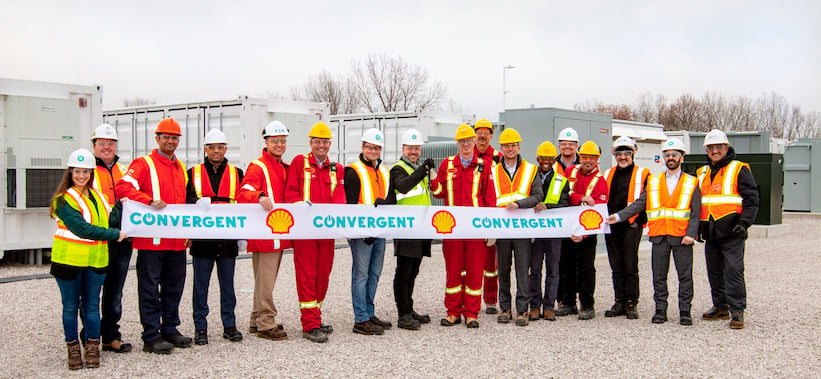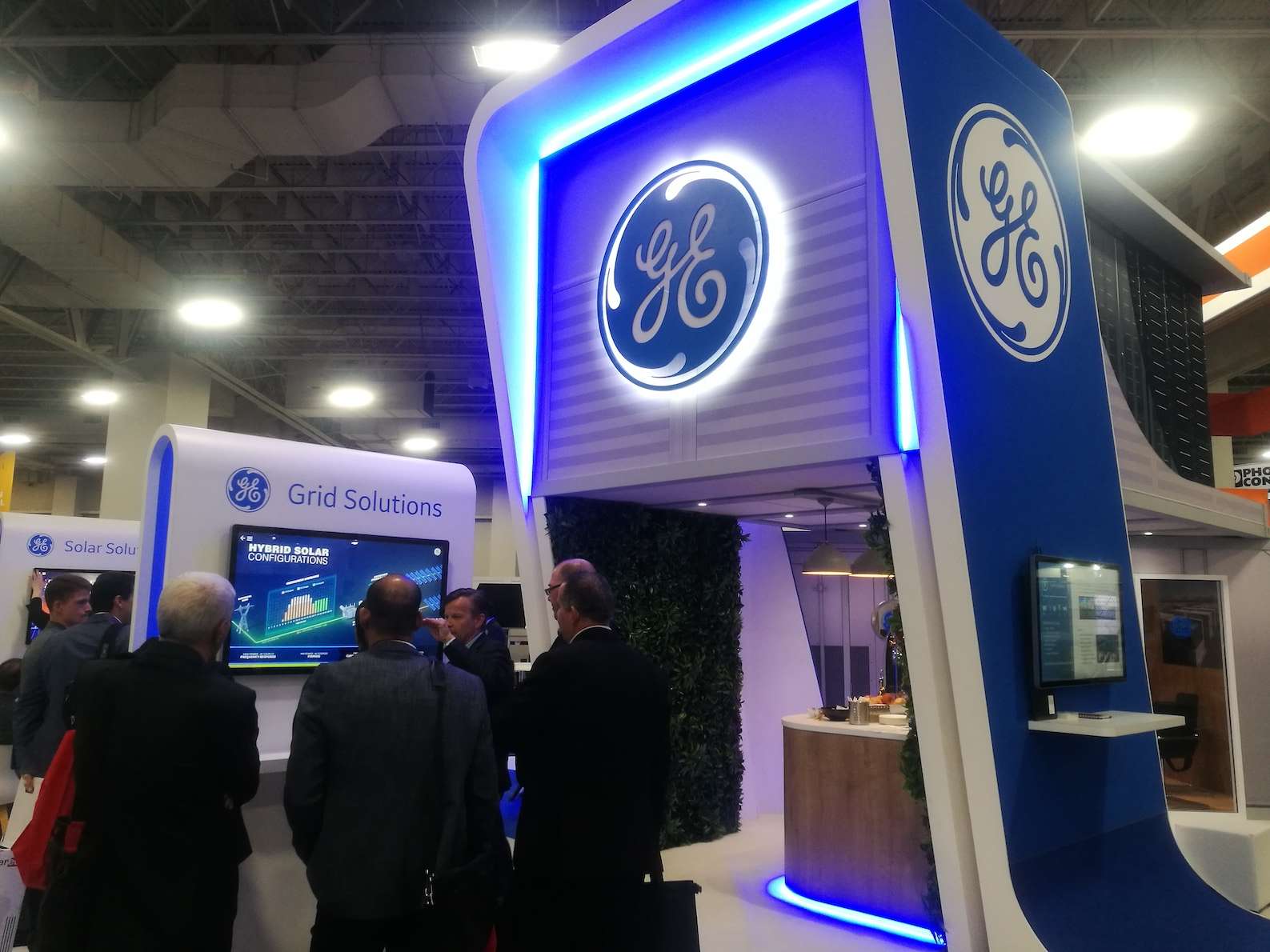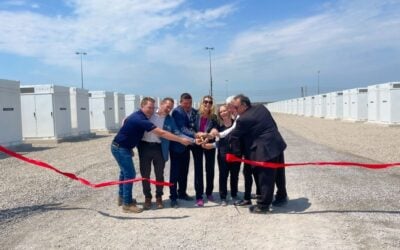
Developer Convergent Energy & Power’s first projects out of a joint venture (JV) with Shell have come online, while GE Renewable Energy touted the imminent implementation of the country’s ‘first hybrid electric gas turbine’ project.
Business division Shell New Energies said in May this year that it had spotted opportunities in Canada linked to the Province of Ontario’s policies that reward large users of energy that reduce their demand for grid energy at peak times and created the JV with Convergent Energy & Power, offering the latter’s services and products to its C&I customers.
Enjoy 12 months of exclusive analysis
- Regular insight and analysis of the industry’s biggest developments
- In-depth interviews with the industry’s leading figures
- Annual digital subscription to the PV Tech Power journal
- Discounts on Solar Media’s portfolio of events, in-person and virtual
The fossil fuels major announced an initial 21MWh of projects at Shell Canada Products production facilities, one at Brockville, a motor oils and lubricants plants and Sarnia, an oil refinery. A 10MW behind-the-meter (BTM) system deployed as part of that 21MWh is currently tied with another Convergent project as North America’s largest behind-the-meter battery project, the company claimed.
Energy-Storage.news has reported on dozens of megawatts of commercial and industrial (C&I) facilities’ energy storage projects in Ontario, with policy drivers including the Global Adjustment Charge (GAC). As early as 2016, we heard from the assembled industry at an event hosted by the Canadian Embassy in London that a long-term policy remit to provide “clean, affordable” electricity was the foundation of the province’s market. A more recent notable example is the 48MW / 144MWh Customer Energy Management (CMEa) programme battery energy storage project awarded to tech provider Fluence by a local electricity distribution company. In that instance, 357 businesses will be able to benefit from shared savings of around C$5 million (US$3.76 million) per year between them using a single, large-scale battery system to reduce peak demand. Convergent sent a reminder with its latest release that Canadian non-profit Fraser Institute found electricity prices in Ontario are 65% higher for large consumers of electricity in the province than elsewhere in Canada. Convergent itself now has 40MW in operation in Ontario, the company said.
Convergent, which was bought up in summer this year by infrastructure investment group Energy Capital Partners (see here to read an exclusive post-takeover interview with Convergent CEO Johannes Ritterhausen) is going to operate the 21MWh of energy storage, reducing the Shell facilities’ draw from the grid, using Convergent Energy & Power’s proprietary PEAK IQ asset management platform.
While the use of low emissions energy storage technology to ease the economic pains of operating a fossil fuels business may be a little hard to accept for some, they are nonetheless an effective showcase that energy consumption at such facilities could be reduced by a third using energy storage technology, as Convergent and Shell claim will be the case here.
Hopefully it also continues to demonstrate valuable and replicable use cases for energy storage that could more widely be scaled by others. Energy-Storage.news asked Convergent representatives for further commentary and details on the technologies used, the business case and replicability, as well as the environmental impetus for these and other projects in Canada and the wider North American region; replies weren’t received at time of publication but are expected shortly from the company.
“We’re proud to work with the innovative team at Shell New Energies to create value for Shell Canada Products facilities while providing long-term benefits to the grid. We’re looking forward to providing Convergent’s results-driven approach to energy management in Ontario to commercial and industrial facilities across North America,” Convergent Energy & Power SVP of business development, Toby Tiktinsky, said in a company release.
GE to supply country’s first ‘hybrid electric turbine’
Separately to that, GE Renewable Energy said in early November that along with Alberta, Canada-headquartered energy supplier ENMAX, it is executing the country’s first ‘hybrid electric gas turbine’ system project.
An agreement was reached between the pair to use a gas turbine solution GE has come up with that integrates a battery energy storage system (BESS) and “patented hybrid controls” that allow the natural gas generator to continue providing operating reserve without needing to burn fuel.
GE Renewable Energy implemented what is thought to be the world’s first such project in the US in April 2017, for utility Southern California Edison. For Enmax in Alberta, an existing gas turbine will be fitted with a GE turnkey solution, in a project funded by the province’s industry-funded group, Emissions Reduction Alberta via a competitive selection process called the Industrial Efficiency Challenge. It is hoped that the hybridisation will enable significant greenhouse gas (GHG) emissions reductions from the plant.
Several industry commentators and experts have spoken with Energy-Storage.news about what is sometimes perceived as a ‘difficult relationship’ between natural gas and energy storage. California Energy Storage Alliance (CESA) executive director Janice Lin described energy storage-plus-natural gas as a “game changer” in enabling much higher shares of renewable energy on the grid. Similarly, Andy Tang at Greensmith Energy, the energy storage system integrator purchased by natural gas engines company Wartsila, said that while both Greensmith and the parent company ultimately believe in achieving 100% renewables, the bridging role being played by natural gas is still an important one.
Meanwhile US industry giant GE, perhaps better known in wind than in other renewable energy circles, nonetheless booked out large exhibition space at this year’s annual Solar Power International / Energy Storage International show in Salt Lake City (pictured) and Energy-Storage.news has reported on projects executed or planned by the company in diverse regions including the UK and Mexico.
Coincidentally, in October, Energy-Storage.news reported that Convergent Energy & Power has selected GE Renewable Energy to supply complete battery energy storage systems (BESS) to three projects the developer is executing in California, totalling 100MWh.







